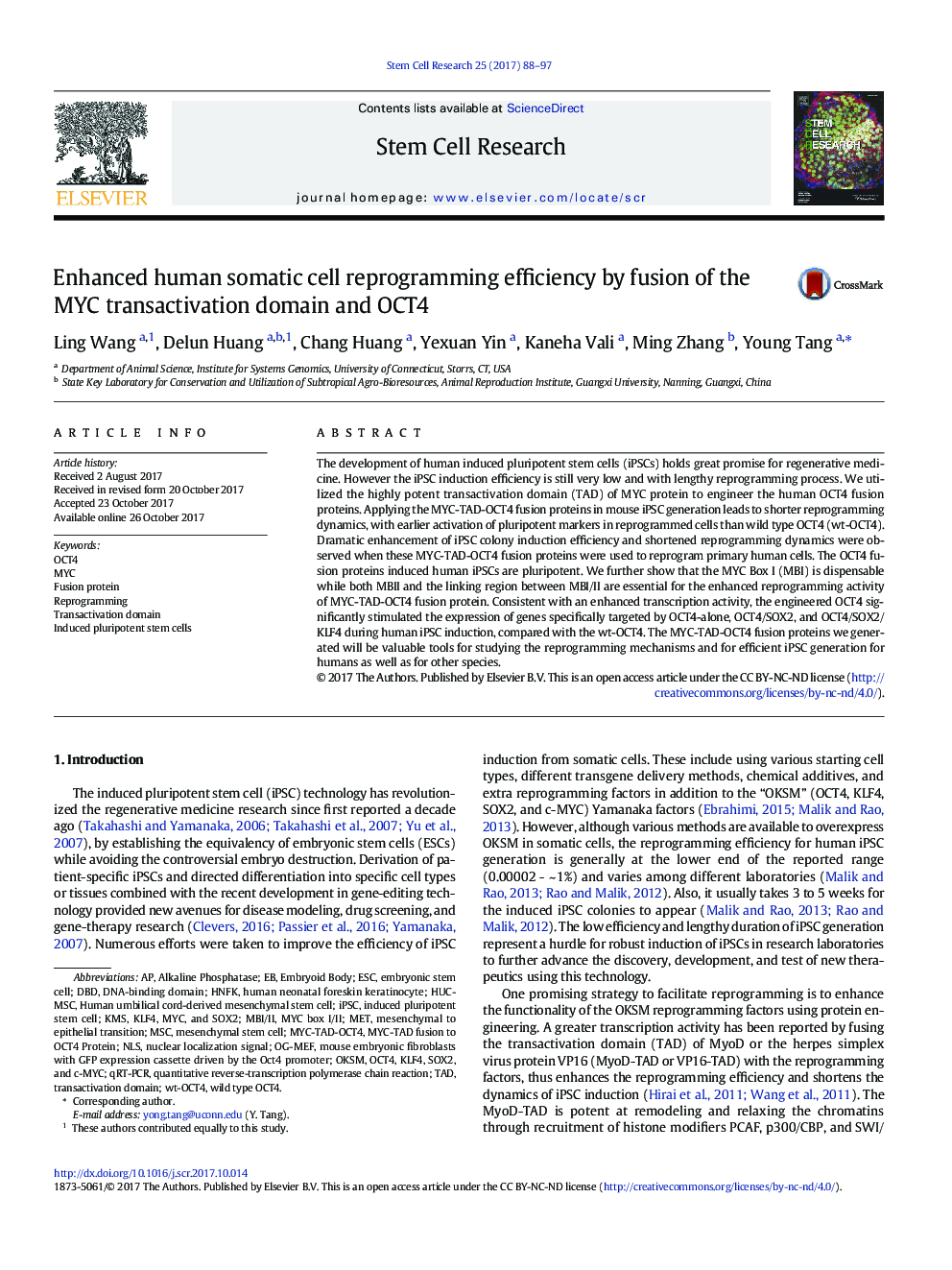| Article ID | Journal | Published Year | Pages | File Type |
|---|---|---|---|---|
| 8425750 | Stem Cell Research | 2017 | 10 Pages |
Abstract
The development of human induced pluripotent stem cells (iPSCs) holds great promise for regenerative medicine. However the iPSC induction efficiency is still very low and with lengthy reprogramming process. We utilized the highly potent transactivation domain (TAD) of MYC protein to engineer the human OCT4 fusion proteins. Applying the MYC-TAD-OCT4 fusion proteins in mouse iPSC generation leads to shorter reprogramming dynamics, with earlier activation of pluripotent markers in reprogrammed cells than wild type OCT4 (wt-OCT4). Dramatic enhancement of iPSC colony induction efficiency and shortened reprogramming dynamics were observed when these MYC-TAD-OCT4 fusion proteins were used to reprogram primary human cells. The OCT4 fusion proteins induced human iPSCs are pluripotent. We further show that the MYC Box I (MBI) is dispensable while both MBII and the linking region between MBI/II are essential for the enhanced reprogramming activity of MYC-TAD-OCT4 fusion protein. Consistent with an enhanced transcription activity, the engineered OCT4 significantly stimulated the expression of genes specifically targeted by OCT4-alone, OCT4/SOX2, and OCT4/SOX2/KLF4 during human iPSC induction, compared with the wt-OCT4. The MYC-TAD-OCT4 fusion proteins we generated will be valuable tools for studying the reprogramming mechanisms and for efficient iPSC generation for humans as well as for other species.
Keywords
Oct4DBDMYCNLSMSCkmsqRT-PCRIPSCAlkaline phosphataseReprogrammingTADembryoid bodyESCDNA-Binding Domaintransactivation domainEmbryonic stem cellMesenchymal stem cellInduced pluripotent stem cellsInduced pluripotent stem cellnuclear localization signalmesenchymal to epithelial transitionMETquantitative reverse-transcription polymerase chain reactionFusion protein
Related Topics
Life Sciences
Biochemistry, Genetics and Molecular Biology
Biotechnology
Authors
Ling Wang, Delun Huang, Chang Huang, Yexuan Yin, Kaneha Vali, Ming Zhang, Young Tang,
